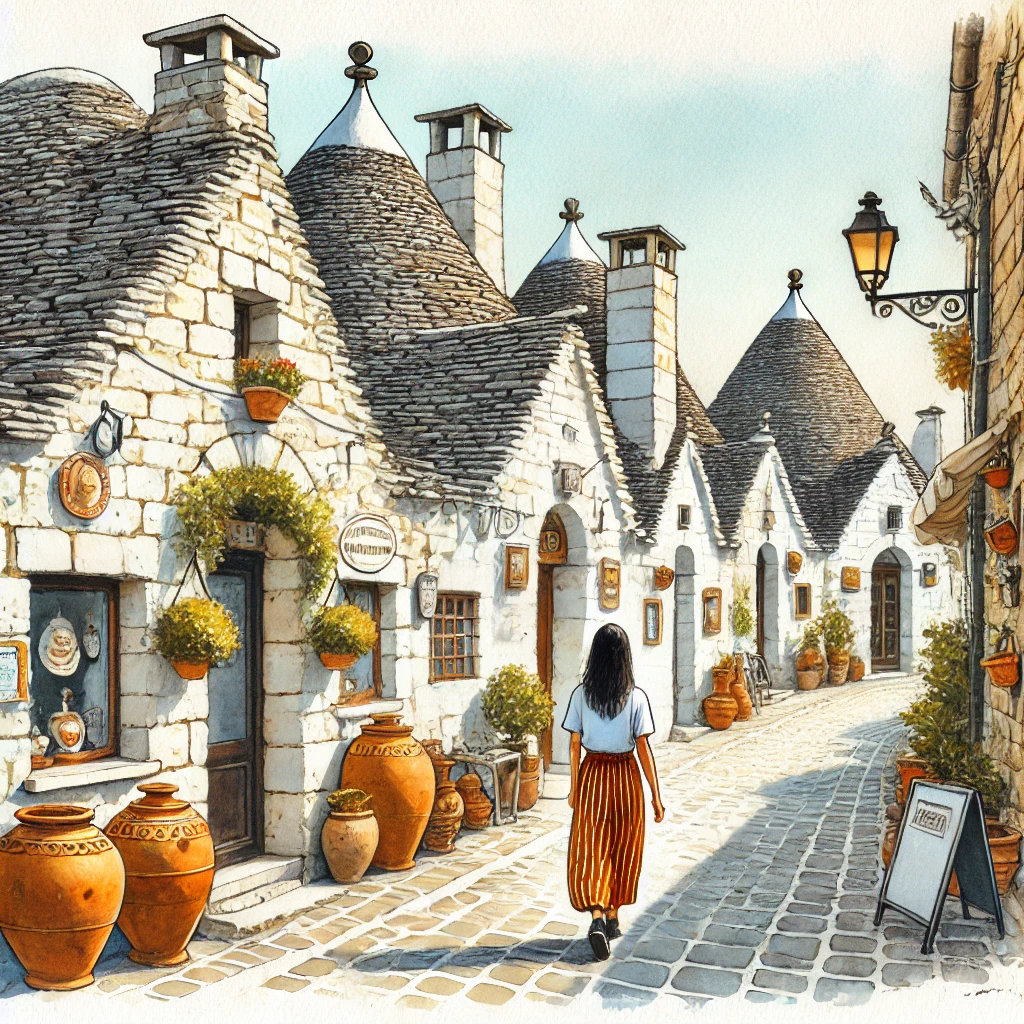ChatGPT:
Alberobello, located in the Puglia region of southern Italy, is a small town renowned for its unique and picturesque “trulli” houses. These trulli are whitewashed stone huts with conical roofs, a distinctive architectural style that dates back to the 14th century. The town is a UNESCO World Heritage site, primarily due to these structures, which are made without the use of mortar, using a prehistoric building technique.
In addition to its architectural charm, Alberobello offers a glimpse into traditional Apulian culture and cuisine. Visitors can enjoy local specialties such as orecchiette pasta, taralli (a type of savory biscuit), and various dishes featuring locally produced olive oil and wine.
The town’s small size makes it an ideal destination for a day trip, but its enchanting atmosphere often encourages visitors to stay longer.
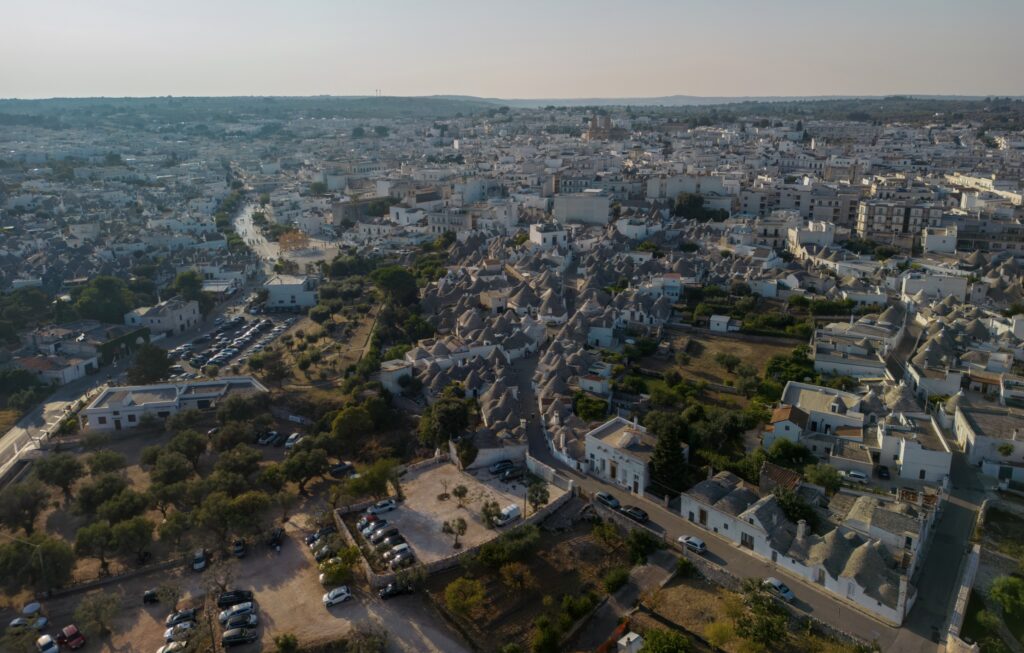
Alberobello’s origins and development are deeply intertwined with the unique architectural style of its “trulli” houses, which have shaped the town’s identity and history.
Origin and Early History
The origins of Alberobello date back to the 14th century when the area was largely uninhabited. It began as a settlement under the feudal control of the Acquaviva family, a powerful noble family in the Kingdom of Naples. However, due to a peculiar set of circumstances, the town’s inhabitants began constructing their homes using a unique dry-stone technique, which involved stacking stones without mortar.
The reason for this construction method is linked to a tax loophole. At the time, the Kingdom of Naples imposed a tax on new settlements, which was calculated based on the number of permanent structures. To avoid paying these taxes, the Acquaviva family instructed the inhabitants to build their homes in a way that allowed them to be quickly dismantled in case of a royal inspection. Thus, the trullo, with its conical, mortarless roof, became the standard housing style in Alberobello.
Development and Expansion
As the settlement grew, so did the number of trulli. By the 17th century, Alberobello had expanded considerably, and it began to take on the appearance that we recognize today. The trulli, initially built out of necessity and convenience, became a defining feature of the town. Their construction method, which was well-suited to the local limestone-rich terrain, also provided good insulation against the hot Mediterranean climate.
In 1797, a significant turning point occurred when King Ferdinand IV of Bourbon officially recognized Alberobello as a town, freeing it from the feudal rule of the Acquaviva family. This recognition allowed the town to develop more freely, although the trulli continued to be the predominant architectural style.
Modern Era and UNESCO Recognition
Throughout the 19th and 20th centuries, Alberobello remained relatively isolated and retained much of its traditional character. The trulli, which were originally seen as a symbol of poverty and backwardness, gradually gained recognition for their unique architectural and cultural value.
In 1996, Alberobello’s historic center was designated a UNESCO World Heritage site, primarily due to its well-preserved trulli. This recognition spurred increased interest in the town from both Italian and international tourists. Today, Alberobello is a thriving tourist destination, with many of the trulli converted into shops, restaurants, and accommodations. Despite this commercialization, the town has managed to retain much of its original charm and continues to be a living testament to a unique way of life that has endured for centuries.
The development of Alberobello has been a continuous process of transformation, from a feudal agricultural settlement to a modern town celebrated for its distinctive architectural heritage.
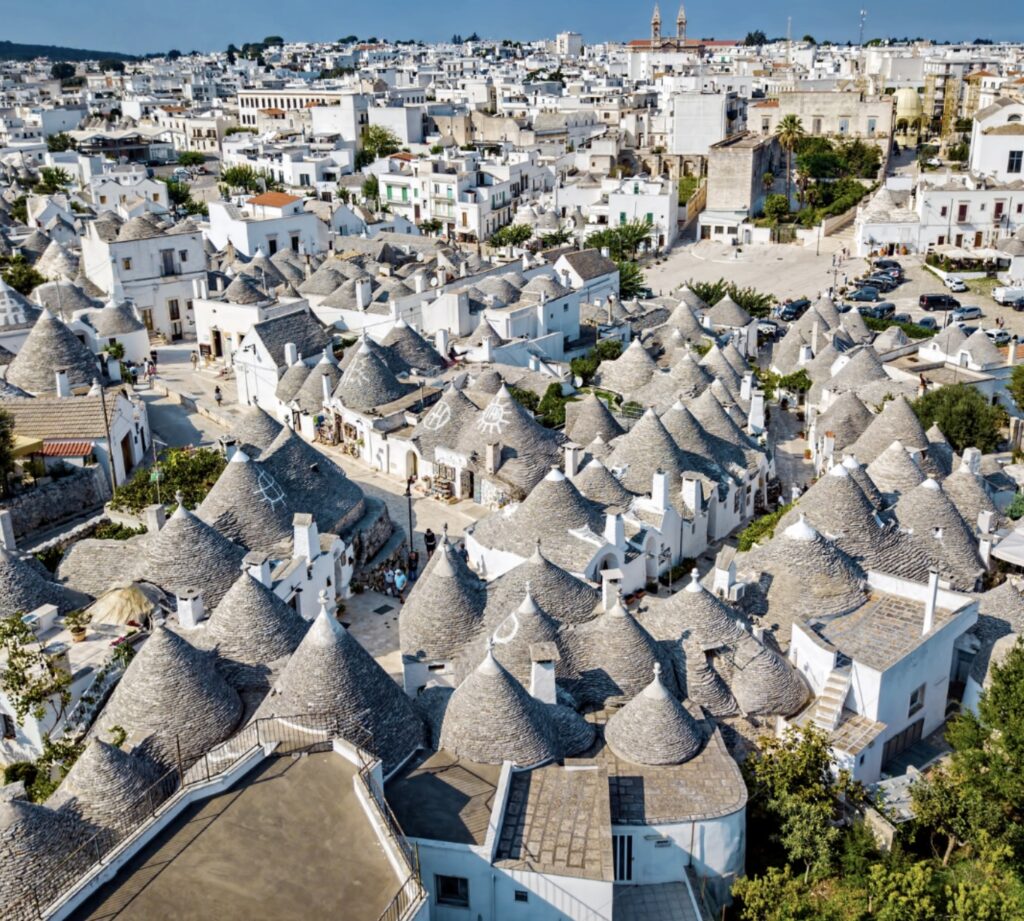
Alberobello is home to several historical monuments and tourist attractions, most of which are centered around its unique “trulli” architecture. Here’s a list of the main sites to visit:
1. Rione Monti
- This is the most famous district in Alberobello, containing over 1,000 trulli. It’s the most visited area, where many of the trulli have been converted into shops, cafes, and small museums. The narrow, winding streets and charming trulli make it a favorite for tourists.
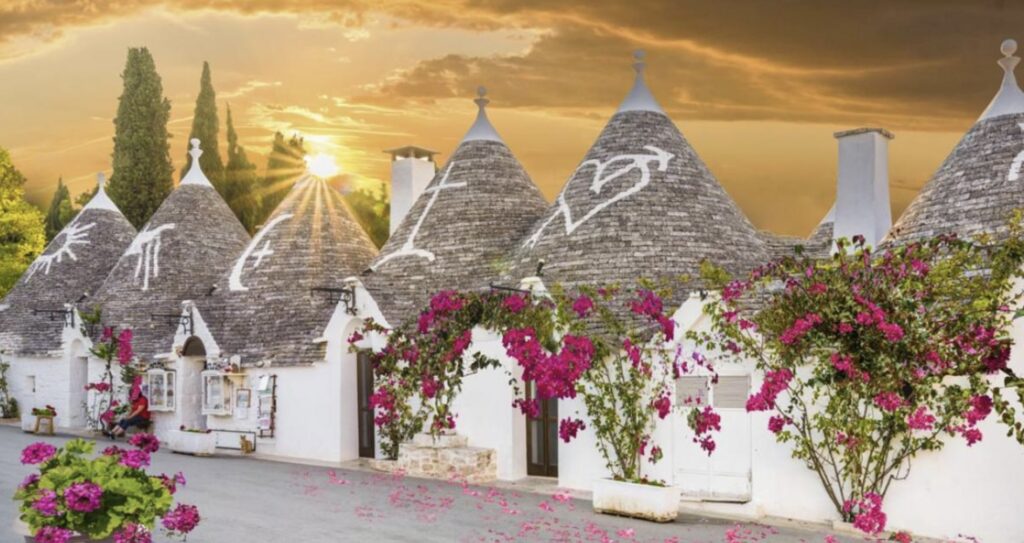
2. Rione Aia Piccola
- Unlike Rione Monti, Aia Piccola is a quieter and more residential district. It has around 400 trulli and is less commercialized, offering a more authentic glimpse into traditional life in Alberobello. It’s a great area for a peaceful walk and to see trulli that are still used as homes.
3. Trullo Sovrano
- This is the only two-story trullo in Alberobello and serves as a museum. Built in the 18th century, it offers a look into the history and lifestyle of the people who lived in trulli. The museum showcases period furniture, artifacts, and explanations of the trullo construction technique.
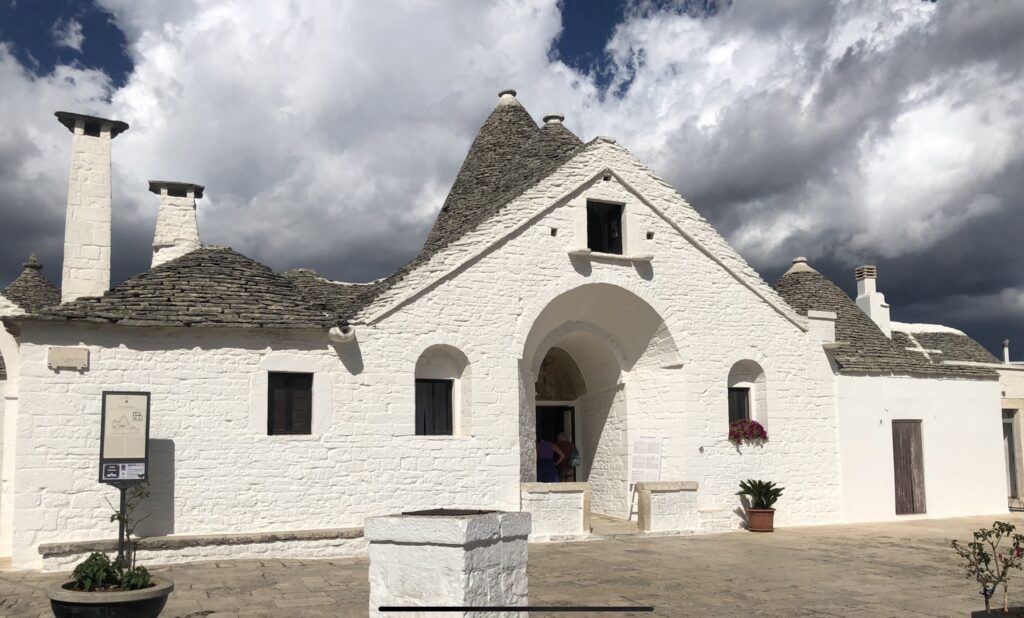
4. Trulli Siamesi
- These are two trulli joined together, with conical roofs that share a wall. The structure is unique due to its twin appearance, and local legends surround its origins, often involving stories of feuding brothers.
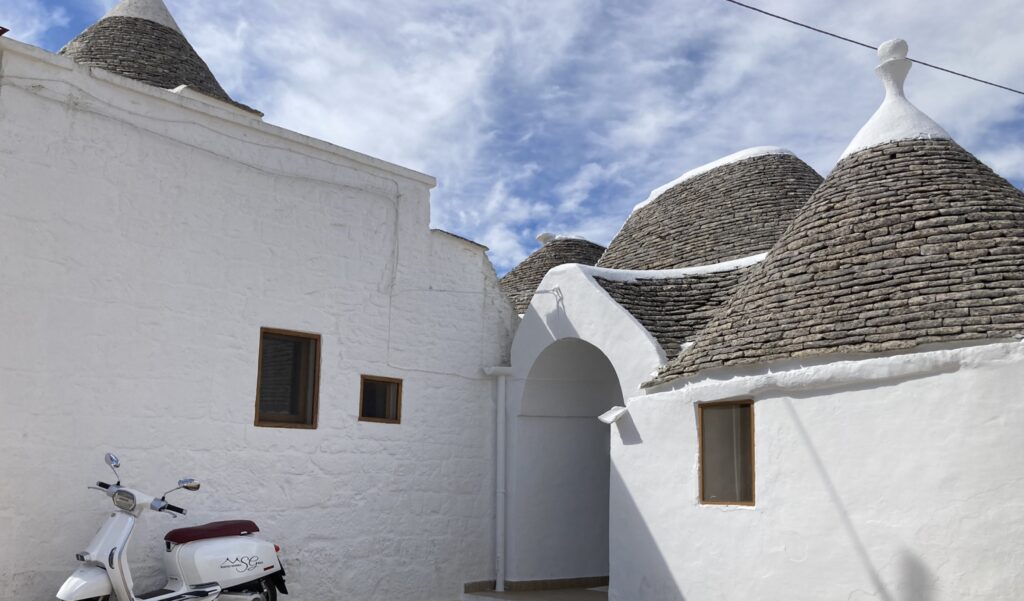
5. Church of St. Anthony (Chiesa di Sant’Antonio)
- Located at the top of Rione Monti, this church is notable for its trullo-like design, with a conical roof and whitewashed stone. Built in 1927, it’s a significant religious site and a unique example of ecclesiastical architecture.
6. Basilica of Saints Cosmas and Damian (Basilica dei Santi Medici Cosma e Damiano)
- This basilica, located near the town center, is dedicated to the patron saints of Alberobello. It was built in the late 19th century in a neoclassical style and houses a significant relic of the saints. The interior is ornate, with beautiful frescoes and decorations.
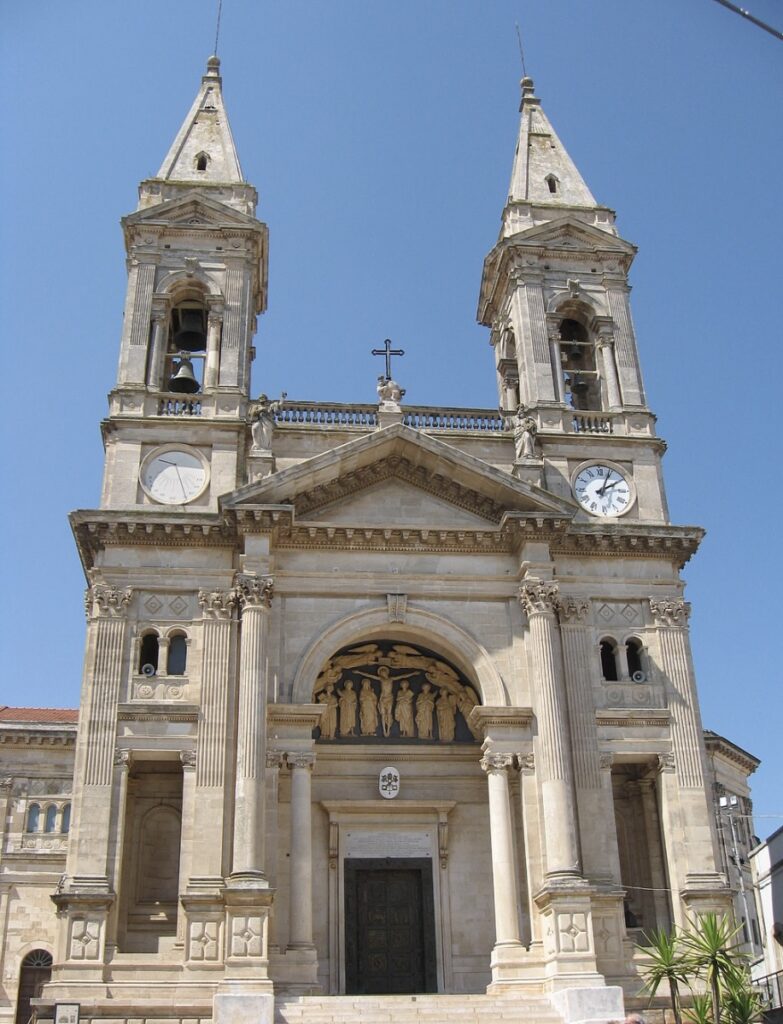
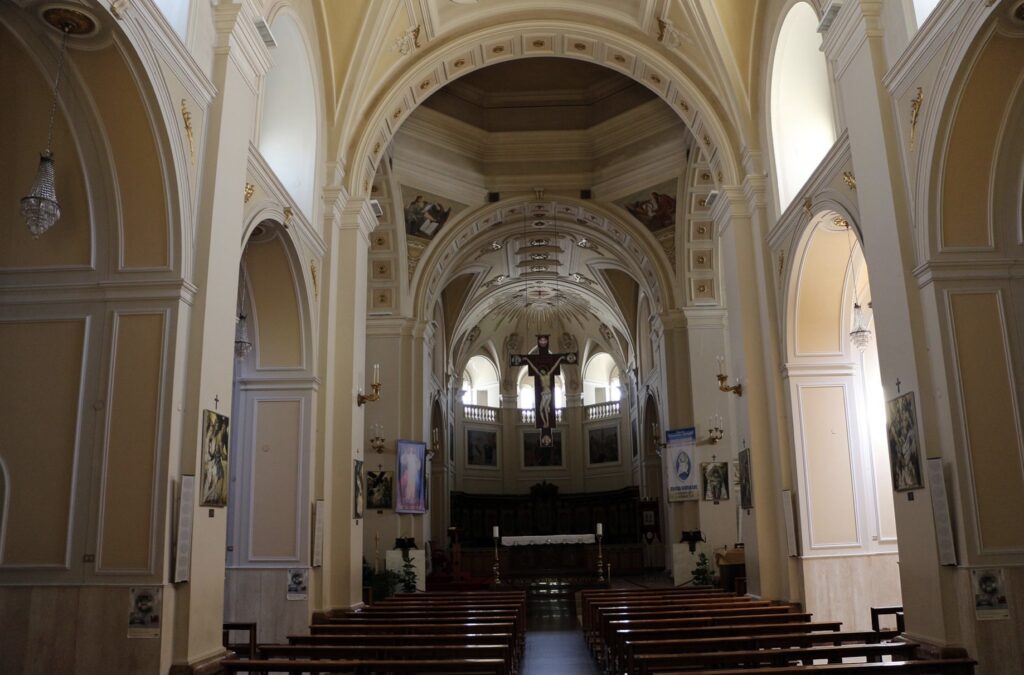
7. Casa d’Amore
- This house is historically significant as the first building in Alberobello constructed with mortar, marking a departure from the traditional trullo style. It was built in 1797, shortly after the town was liberated from feudal rule. Casa d’Amore is now a symbol of the town’s emancipation and is an important cultural site.
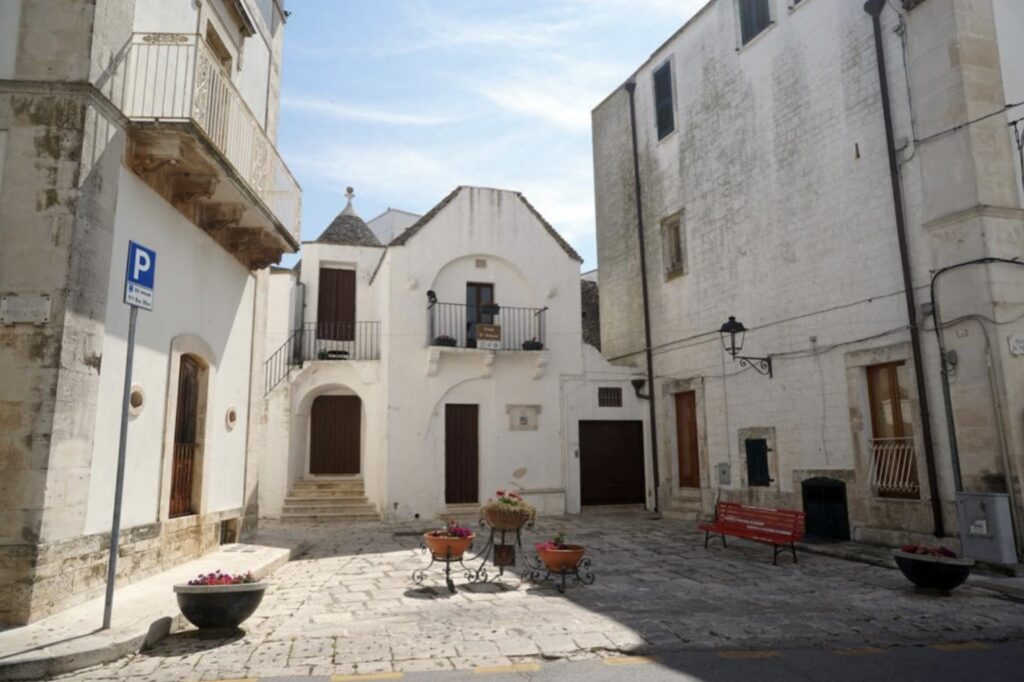
8. Territory Museum “Casa Pezzolla”
- This museum is housed in a complex of interconnected trulli. It provides an in-depth look at the history, culture, and traditions of Alberobello and the surrounding region. Exhibits include historical artifacts, tools, and information on trullo construction.
9. Trullo Sovrano Garden
- This small garden next to the Trullo Sovrano offers a quiet place to relax and enjoy the surroundings. It’s particularly attractive during the warmer months when flowers are in bloom.
10. Belvedere Santa Lucia
- This viewpoint offers one of the best panoramic views of Alberobello, especially of the Rione Monti district. It’s a popular spot for photography, particularly at sunset, when the trulli are bathed in golden light.
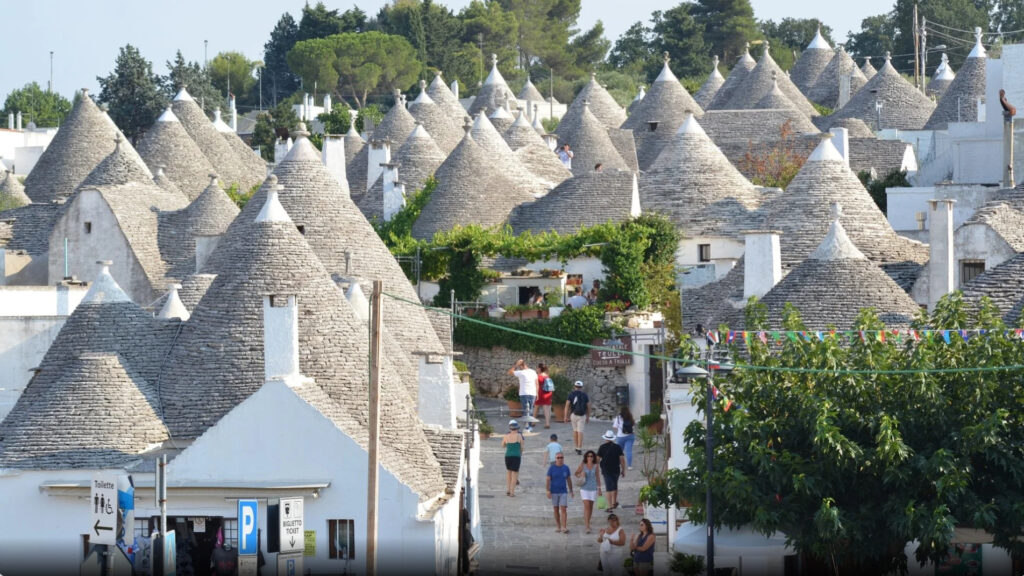
These attractions collectively offer a comprehensive experience of Alberobello’s rich history, culture, and unique architecture, making the town a fascinating destination for visitors.
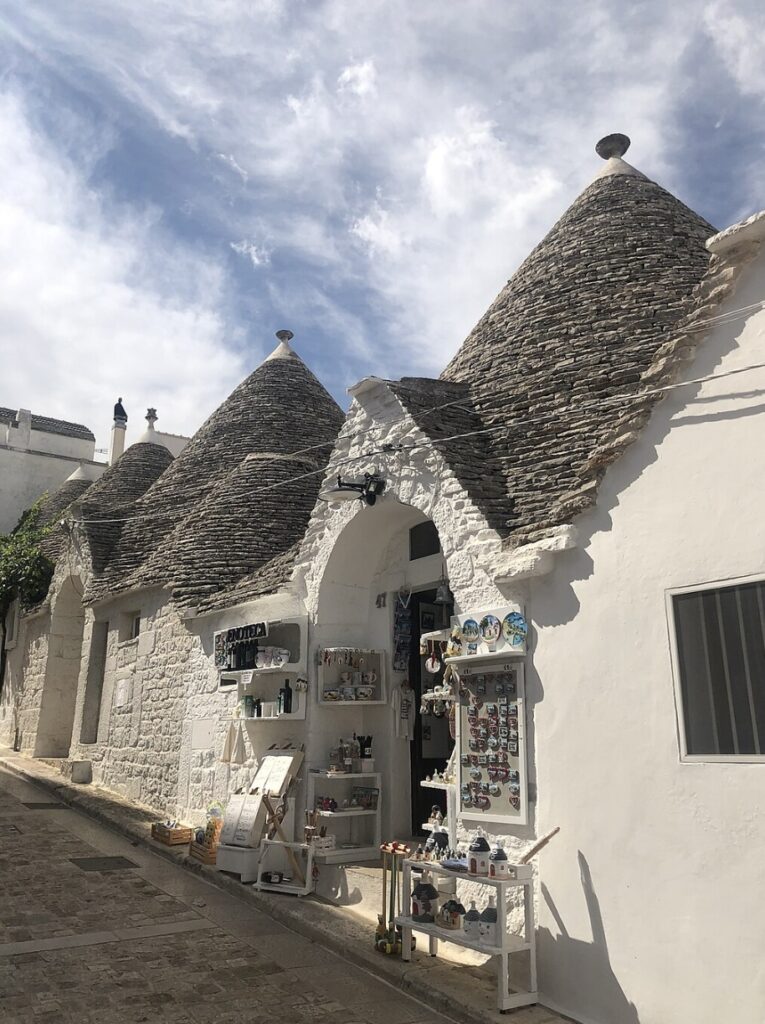
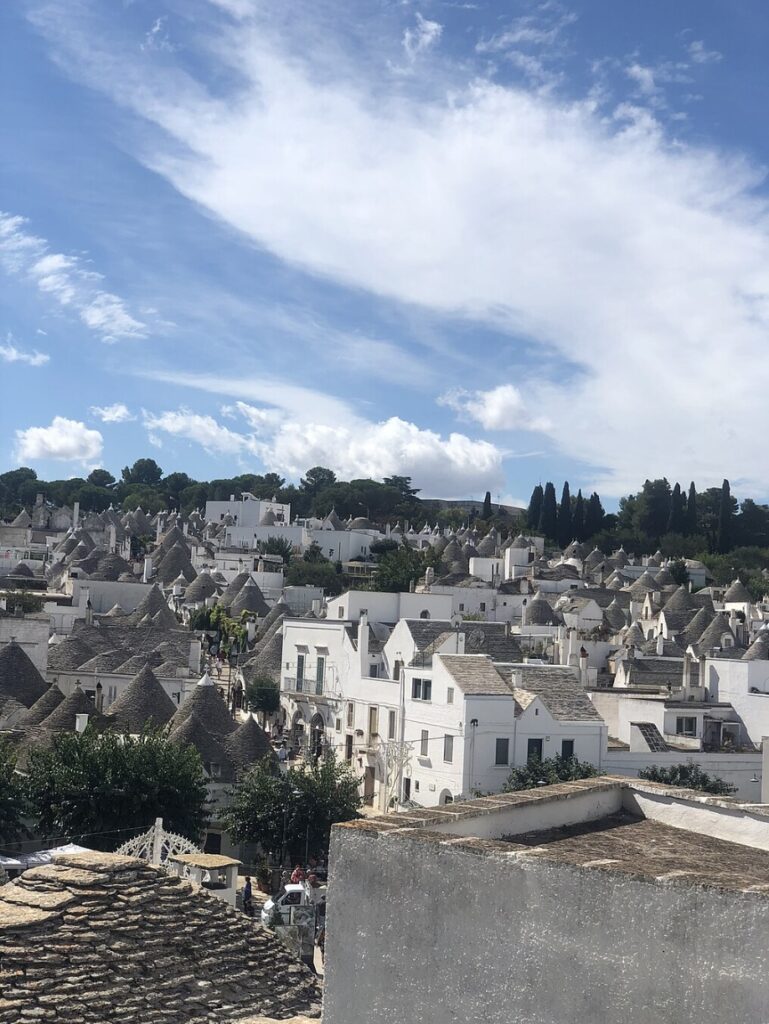
Here’s a one-day itinerary for visiting Alberobello that blends exploring its unique architecture with enjoying the local food scene:
Morning
- Start with Breakfast at a Local Café
- Begin your day with a traditional Italian breakfast at a local café in Rione Monti. Enjoy an espresso or cappuccino paired with a pastry like a cornetto (Italian croissant) or a pasticciotto, a local pastry filled with custard or ricotta.
- Explore Rione Monti
- After breakfast, stroll through Rione Monti, the most famous district in Alberobello. Take your time to explore the narrow streets lined with over 1,000 trulli. Many of these trulli have been converted into shops, galleries, and small museums. Don’t miss the Trulli Siamesi and the Trullo Sovrano, the only two-story trullo in town.
- Visit the Church of St. Anthony
- Walk up to the Church of St. Anthony, located at the top of Rione Monti. This trullo-shaped church is a unique example of religious architecture and offers a serene space for reflection.
Midday
- Lunch at a Traditional Trattoria
- For lunch, head to a traditional trattoria such as Trattoria Terra Madre or L’Aratro, where you can enjoy authentic Apulian cuisine. Try local dishes like orecchiette alle cime di rapa (ear-shaped pasta with turnip tops), burrata (a creamy cheese from Puglia), and focaccia barese (a type of flatbread). Pair your meal with a glass of local Primitivo wine.
Afternoon
- Explore Rione Aia Piccola
- After lunch, explore the quieter Rione Aia Piccola, where you can see trulli that are still used as residences. This district offers a more authentic, less commercialized experience of Alberobello. Take a peaceful walk and immerse yourself in the historic atmosphere.
- Visit the Territory Museum “Casa Pezzolla”
- Stop by the Casa Pezzolla, a museum housed in a complex of interconnected trulli. The museum provides insights into the history, culture, and construction techniques of the trulli, as well as life in Alberobello over the centuries.
Late Afternoon
- Enjoy a Gelato or Aperitivo
- As the afternoon wanes, treat yourself to a gelato from a local gelateria, or enjoy an aperitivo at a café. This is a perfect time to relax and soak in the atmosphere of the town.
Evening
- Dinner at a Local Restaurant
- For dinner, choose a restaurant that highlights local Apulian cuisine. Ristorante Il Pinnacolo is a great option, offering a mix of traditional dishes with a modern twist, all served within a trullo. Consider trying braciole (stuffed meat rolls) or ciceri e tria (chickpeas with fried pasta).
- Sunset at Belvedere Santa Lucia
- End your day with a visit to the Belvedere Santa Lucia, a viewpoint offering panoramic views of Alberobello. Watching the sunset over the trulli is a magical experience, with the warm light creating a stunning contrast against the whitewashed stone.
Optional: Evening Stroll
- If time permits, take an evening stroll through the town, enjoying the trulli lit up at night. The peaceful atmosphere and beautifully illuminated architecture provide a perfect end to your day in Alberobello.
This itinerary gives you a comprehensive experience of Alberobello, blending cultural exploration with the delicious flavors of the local food scene.
